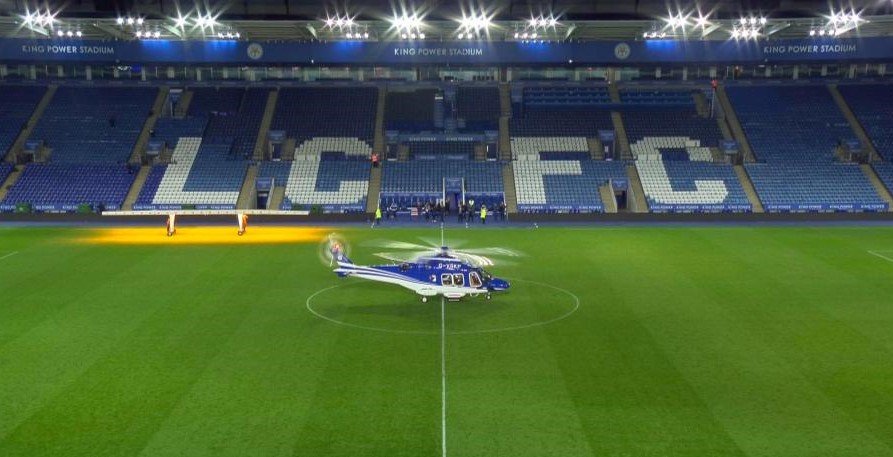The Air Accidents Investigation Branch (AAIB) has released its final report into the 2018 helicopter crash at King Power Stadium, home of Leicester City, which killed the clubs owner as well as 4 other people including the pilot.
According to the report the crash was caused by a catastrophic mechanical failure which began with a duplex bearing in the tail rotor system which resulted in loss of control of the aircraft.
Shortly after take-off thr bearing failed which meant the pilot could no longer control the tail of the aircraft which began rotating around its vertical axis with the pilot saying “i dont know what’s going” shortly before the crash.
Imvestigators say the only option available to the pilot was to reduce power and descend which he did with aircraft coming down in a car park outside the stadium on a stepped concrete area which resulted in the aircraft rolling onto its side rupturing thr fuel tanks resulting in an explosive post impact fire.
Onboard the Leonardo Helicopters AW129, registration G-VSKP were Pilot Eric Swaffer, the pilots girlfriend Izabela Roza Lechowicz, Leicester City owner Vichai Srivaddhanaprabha and staff members Kaveporn Punpare and Nusara Suknamai. All were killed in the crash.
In addition two police officers, Michael Hooper and Stephen Quartermain were injured receiving burns and suffering smoke inhalation as they tried to rescue the occupants.
During the investigation the AAIB found the the failed bearing was subject to fatuque and the races contained large amounts of burnt grease and metal fragement. It noted that the manafacturer of the helicopter did not implement a routine insoectiom requirement for the part.
Eight recomendations were made by the report and issued sixteen Service Bulletins, EASA has published nine Airworthiness Directives for the continued airworthiness of the AW169 and AW189 helicopter types.
Crispin Orr, Chief Inspector of Air Accidents: “This was a tragic accident in which five people sadly lost their lives. Our thoughts are with their loved ones, and everyone affected.
“The AAIB has carried out an extensive investigation to establish why the accident happened and how safety can be improved. This involved a multi-disciplinary team of skilled investigators from the AAIB, supported by a wide range of experts from industry, academia, and safety investigation authorities from around the world.
“As a result, safety action has already been taken for the continued airworthiness of the AW169 and AW189 helicopter fleets.
“Today we are publishing our final report which sets out eight recommendations to enhance safety in the longer term, regarding the design, validation and in-service monitoring of safety critical components on large helicopters.”

